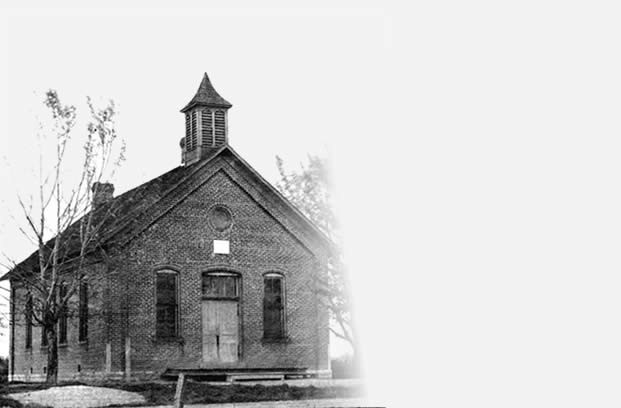The village of New Knoxville is fortunate to be in a geographical location where our water supply comes from artesian wells. The water comes near the surface of the ground, or in some cases higher, with little or no pumping. Many years ago some places could get water to the second story without a pump because of underground pressure. The statement was made in a 1949 Andrew Kay interview with August H. Stienecker that there was one fountain in New Knoxville, and another one was discovered by accident when drilling for oil, which proved to be nonexistent. Mr. Steinecker was the first to intentionally drill a flowing artesian well to a depth of 200 feet. After that many artesian wells were drilled, and some were connected to underground cisterns for fire protection. As the cisterns were pumped, they refilled naturally from the wells.
The following article was published in the Evening Leader on May 6, 1936.
ARTESIAN WELL IS HOOKED UP WITH FIRE CISTERN AT NEW KNOXVILLE
--------------------
Special to The Leader
------------------------
New Knoxville, May 6—Another link in the village’s system of water supply for fire protection has been forged. When the Board of Education acquired the William Thees residence lot as part of the new school lot, Mr. Thees desired a location where an artesian well was available, in order to have a running water supply such as he enjoyed on the lot given up. Accordingly he purchased a lot on South Main street and he and N. P. Katterheinrich and H. H. Hoge jointly had a six inch artesian well drilled in on the Katterheinrich residence lot adjacent to Mr. Thees’ newly acquired residence lot. Mr. Hoge’s primary interest in the well was water supply as a fire protection in behalf of the Hoge Lumber Company’s holdings and residences in the immediate neighborhood.
After the well was completed a 6 inch water main, 3 feet under ground was constructed from the well to the fire cistern approximately 275 feet away. On Wednesday evening the Victoria Fire Department with their
American LaFrance triple pumper of 500 gal. per minute capacity made a thorough test, which proved much satisfaction. With three strings of hose under 100 lb. pressure each it was found that the water level after 15 minutes operation in the cistern was approximately lowered only 4 inches. With two strings of hose, each under 120 lb. pressure, the water level in the cistern rose.
We have been informed that the Ohio Inspection Bureau that determines fire insurance rates based upon the fire protection that a community may have, will in the near future come here and make inspection. At that time another test will be made and, if approved as it is hoped it will be, a downward trend of fire insurance rates is anticipated.
There are 16 public fire cisterns about the village and many of them are hooked up to one or the other of the more than 30 of such artesian wells about the village. If efforts were made to hook up all the fire cisterns with the artesian wells, we surely would enjoy a lower fire insurance rate whether we have a water stand or not.
NOTE: Mr. Thees’ new residence was the house located at what is now 506 S. Main Street, and the N. P. Katterheinrich residence is just to the north at 502 S. Main Street.
The following article concerning the source of New Knoxville’s natural artesian water supply was published in The Evening Leader. The exact date of its publication is unknown, but the context of the letter discussed in the article suggests that it was sometime during the United States’ involvement in World War II. The letter was written by Jake Meckstroth (1887-1985), a well-known newspaper editor and publisher who was a native of New Knoxville.
More information about Mr. Meckstroth can be found on our website under History > Articles > Mrs. Sarah Holtkamp. He wrote that article about Mrs. Holtkamp, and some notes about the author follow the article.
OLD TEAYS RIVER IS CITED AS SOURCE OFNEW KNOXVILLE’S UNUSUAL WATER SUPPLY FROM MANY ARTESIAN WELLS
---------------------
STATE GEOLOGIST TELLS JAKE MECKSTROTH FORMER RIVER BED HAS BEEN FILLED WITH ROCK BUT WATER FLOWS ON WHEN IT CAN
------------------------
Special to The Leader
-------------------------
New Knoxville, Aug. 6—The fountain head of the more than forty artesian wells in and about New Knoxville has often been questioned, but to our knowledge, no satisfactory answer has ever been offered. Recently through the courtesy of Mr. A. F. Hoge, we have come in possession of a letter written by Mr. Jake Meckstroth, editor of the Ohio State Journal, in which he makes good the promise of the past to find out the source of the water supply of the artesian wells about this community. Mr. Meckstroth writes that he consulted Dr. Wilbur Stout, state geologist, and that Dr. Stout had the following to say about the subject:
“Dr. Stout said that a string of Artesian wells is found all along the bed of the old Teays River, which ran from the Atlantic coast in North Carolina, northwestward through Virginia, West Virginia and Ohio, into Indiana, and possibly beyond, though it has not been traced beyond Indiana, which, some day after the war will be done.”
“The Teays bed is solid rock, long since filled up with all sorts of drift, the latest being the glacial drift, which our school books tell about. A large tributary from the northwest emptied into the Teays at about where New Knoxville is now. The water flows down the old Teays River bed, from North Carolina, northward, probably on down beneath Lake Michigan and beyond; that is the water would flow if not obstructed by the drift, and it does flow out whenever the crust is punctured by drilling down to the water level of the old Teays River bed. Likewise, the water still flows down the old tributary from the northwest down below Wapakoneta, emptying into the Teays at New Knoxville: that is, it would if not obstructed. When a hole is drilled in it the water will come out.”
Auglaize County is known to have had artesian wells that flowed 30 feet above the ground, so show Dr. Stout’s records.


